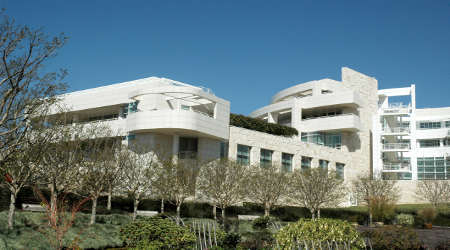
Fire Safety: Planning Ahead for Disaster
December 11, 2017
Facility managers in institutional and commercial facilities are responsible for preparing their buildings and grounds for emergencies. The process involves assessing key systems and components, from HVAC, plumbing, and electrical systems to the materials in surrounding landscapes.
One often-overlooked challenge in this process is that managers must deal with the systems, components and materials that the building’s designers initially selected. In the case of some facilities, designers selected materials in part because they would help managers deal with future crises. Consider the J. Paul Getty Center in Los Angeles.
The center’s extensive art collection stayed put recently even as wildfires blazed not far from the famed museum, says Ron Hartwig, vice president of communications at the Getty Trust, according to a report on CNN. Police shut down about 9 miles of I-405 in both directions as flames swept down the foothills toward the highway near the Getty Center. The Getty Center and the Getty Villa, which are free to visit, remained except for essential staff because of the fires and smoke.
Still, Hartwig said the art complex's plan has always been to keep the artwork in place in case of fire. The Getty is on a hilltop and has little accessibility, so it was designed by architect Richard Meier with disaster situations like these wildfires in mind. "The building was designed to be the best place to keep an art collection," Hartwig says.
Resources: Emergency Preparedness for Facilities
In addition, the Getty Center has a sophisticated air filtration system that can reverse directions and push air out, Hartwig says. That system keeps smoke and ash from getting into the galleries and protects the collection.
The center's landscaping also was designed with the possibility of fires in mind. The plants that have the highest water content are closest to the buildings, and farther away from the building groundskeepers are constantly clearing brush, Hartwig says. The center also has a 1 million gallon water reserve tank on site. "This is the safest place the artwork could be in a situation like a wildfire," Hartwig says. "While we are worried and will be until the last ember is out, we believe the art collection is in the safest place they can be."
Read: Five steps to prepare for any emergency
About 2 million visitors explore the Getty Center and Getty Villa for their art, architecture and gardens, according to the Getty website. Famous works in its collection include Vincent Van Gogh's "Irises," Rembrandt's "The Abduction of Europa" and Edouard Manet's "Jeanne (Spring)."
The museum, which opened in 1997, took 13 years and $1 billion to construct. The Getty originated from the expansive art collection of J. Paul Getty, who was the founder of Getty Oil Co. and one of America's richest industrialists.
This Quick Read was submitted by Dan Hounsell — dan.hounsell@tradepressmedia.com — editor-in-chief of Facility Maintenance Decisions.
Next
Read next on FacilitiesNet












